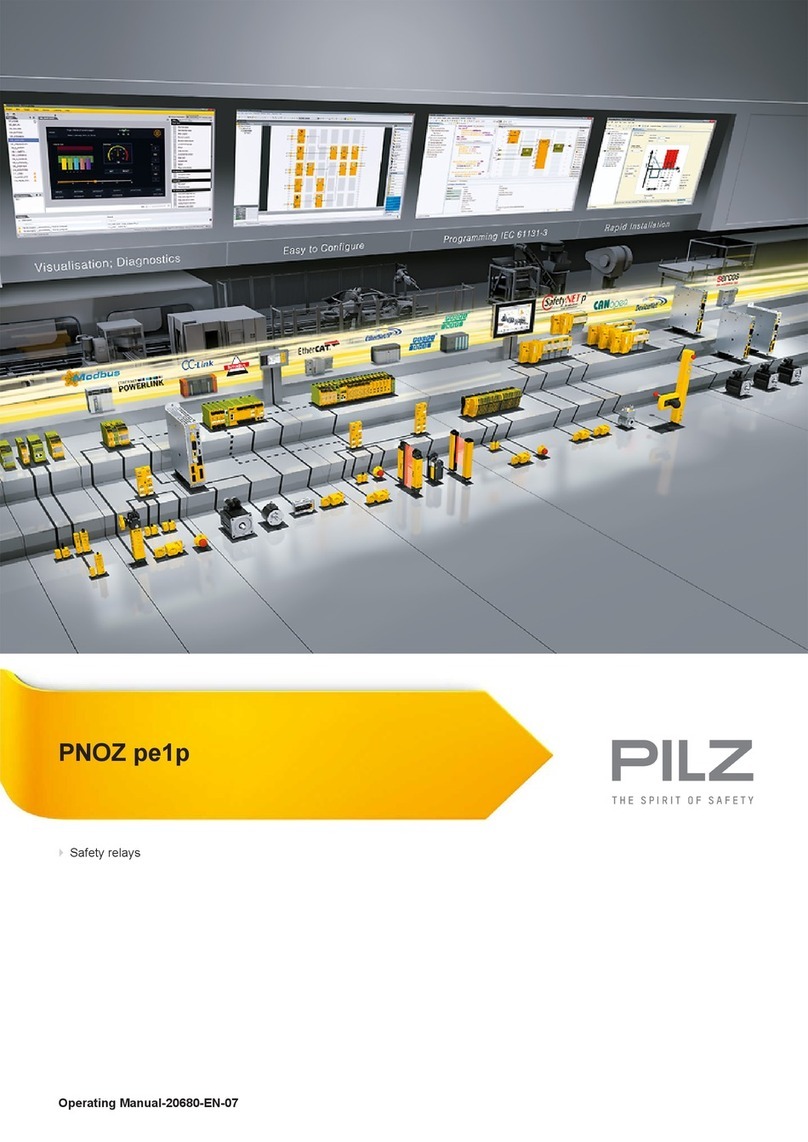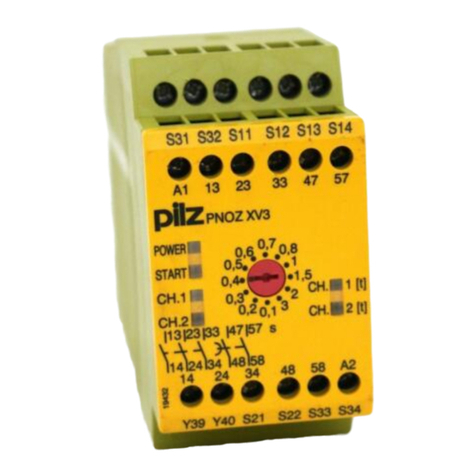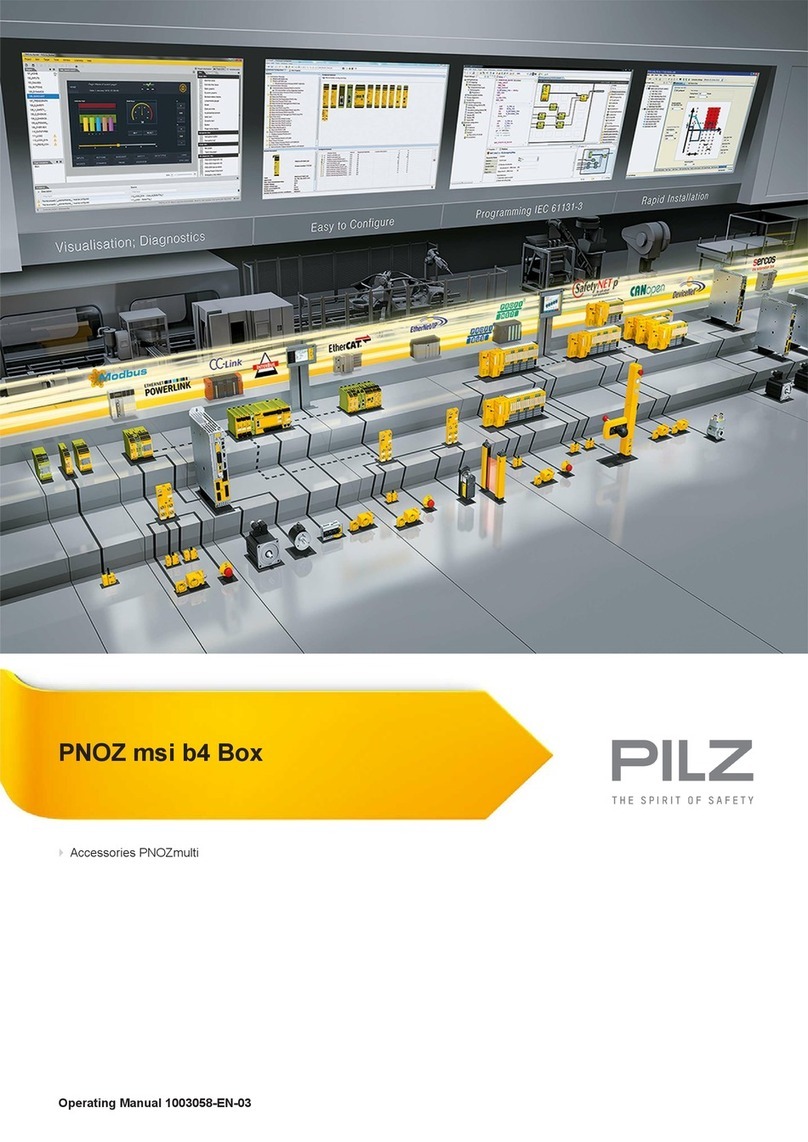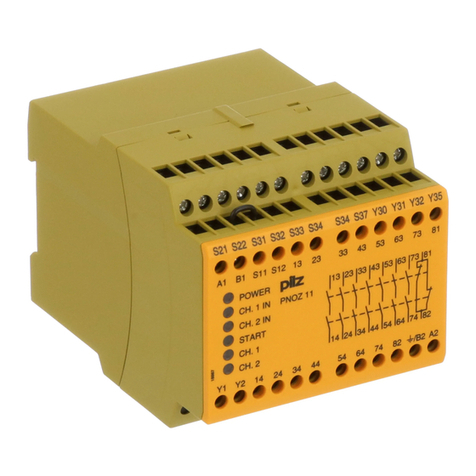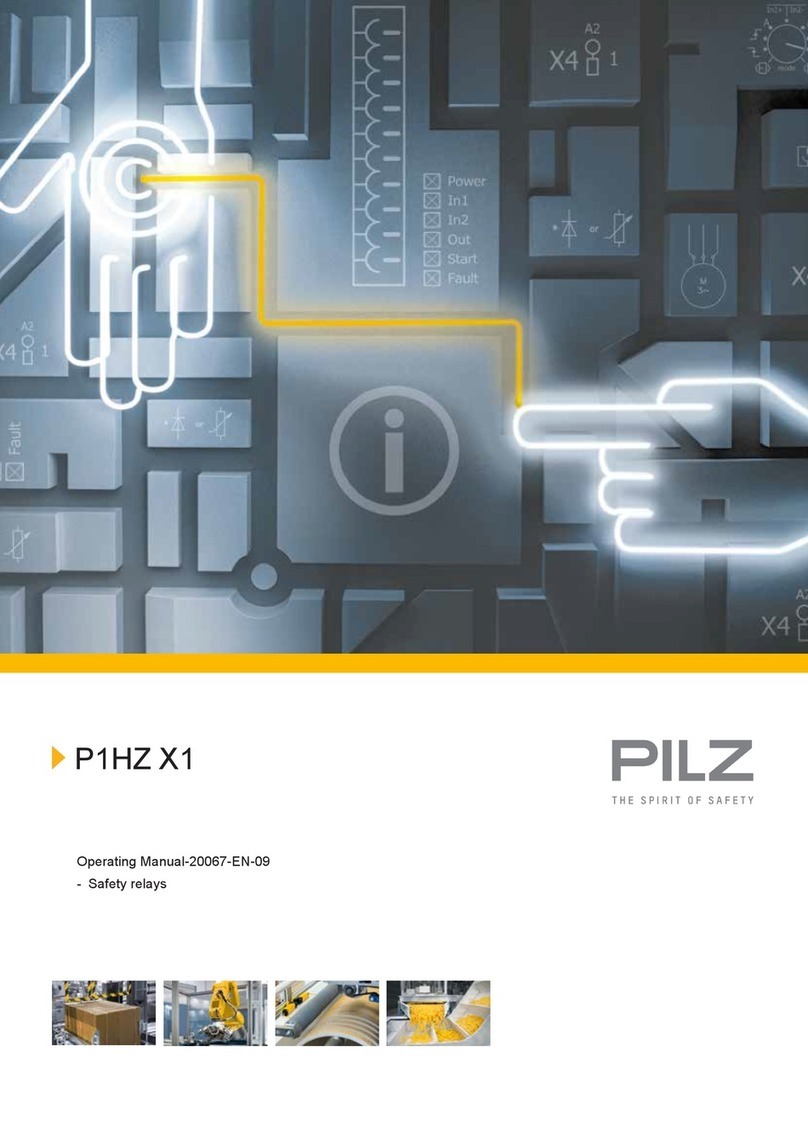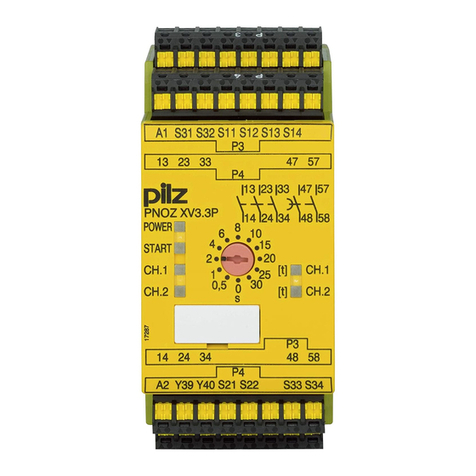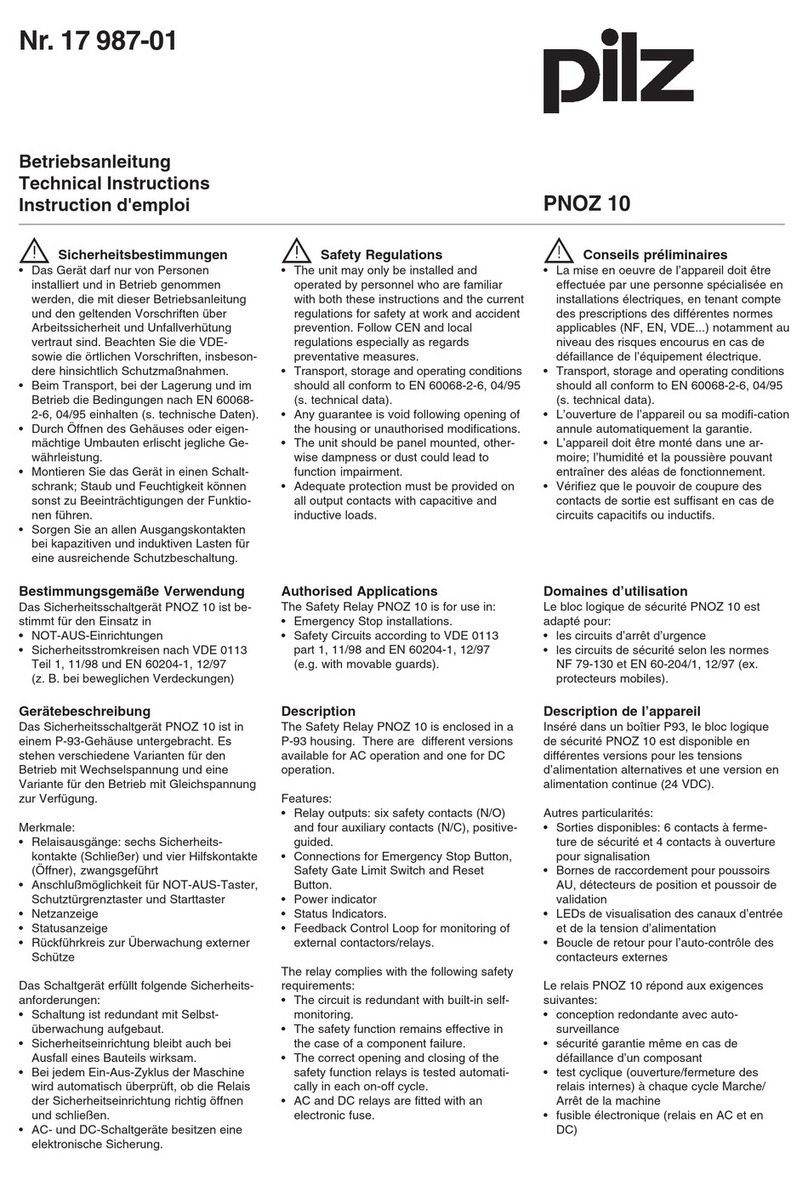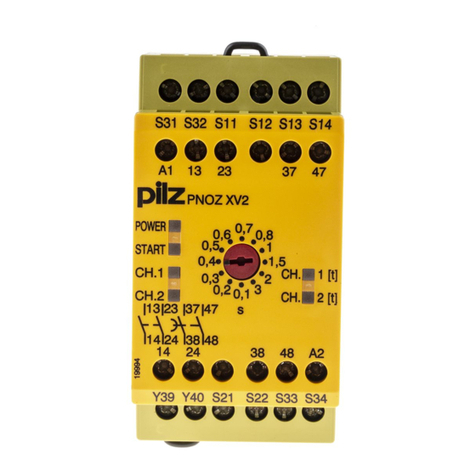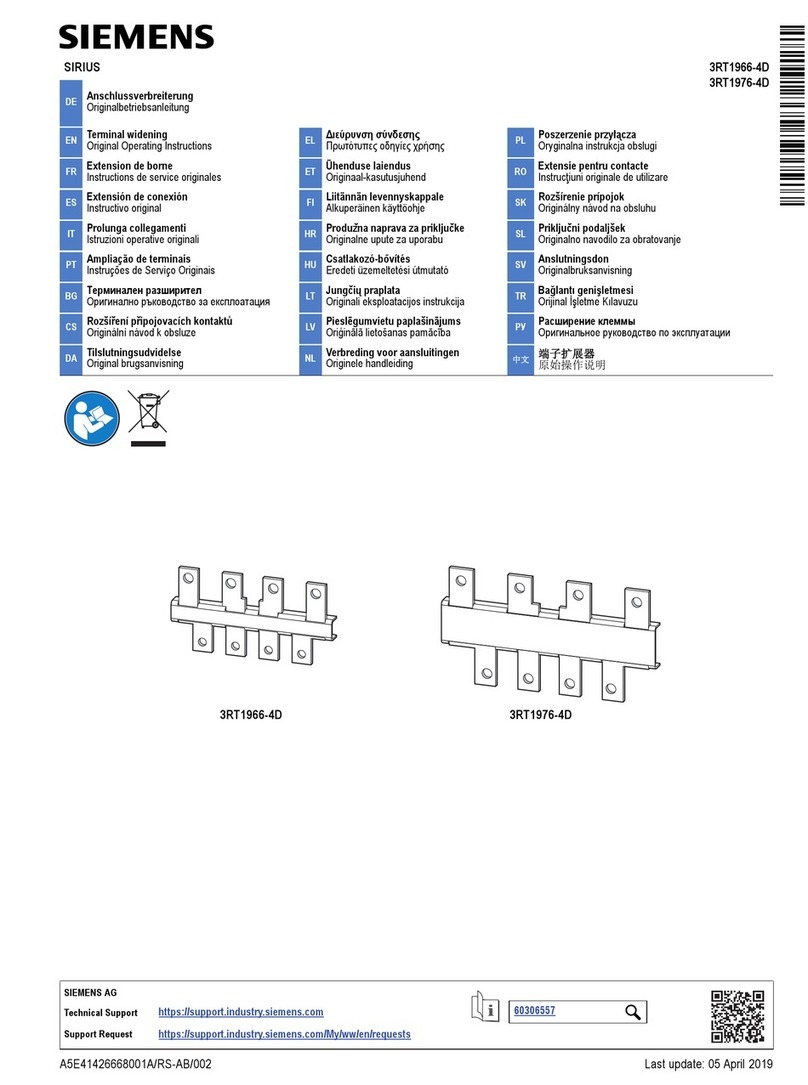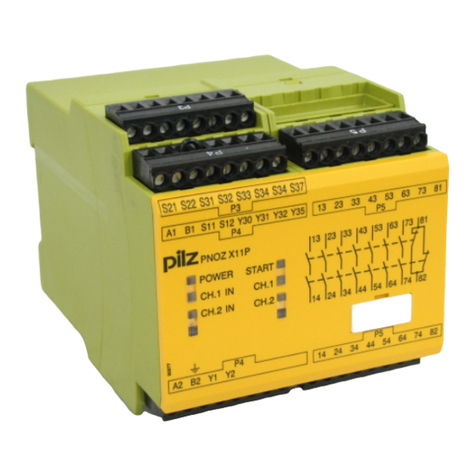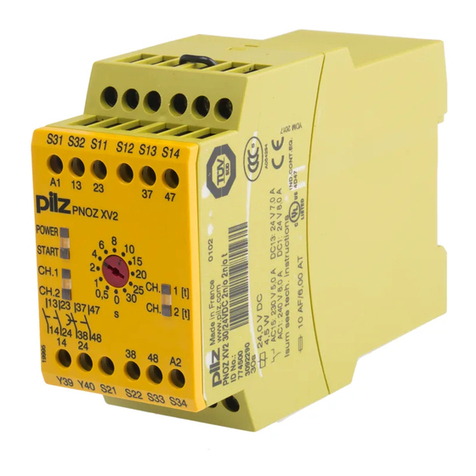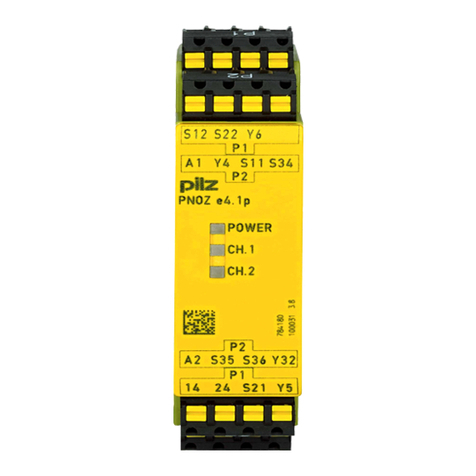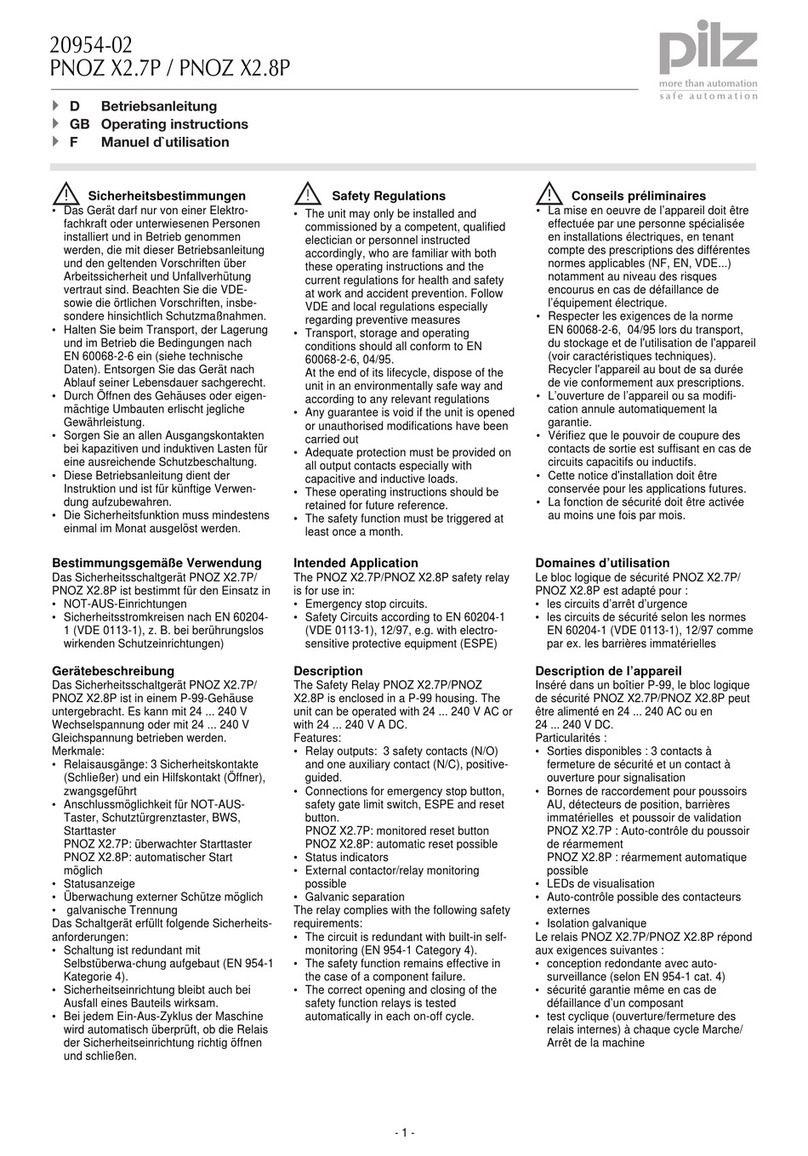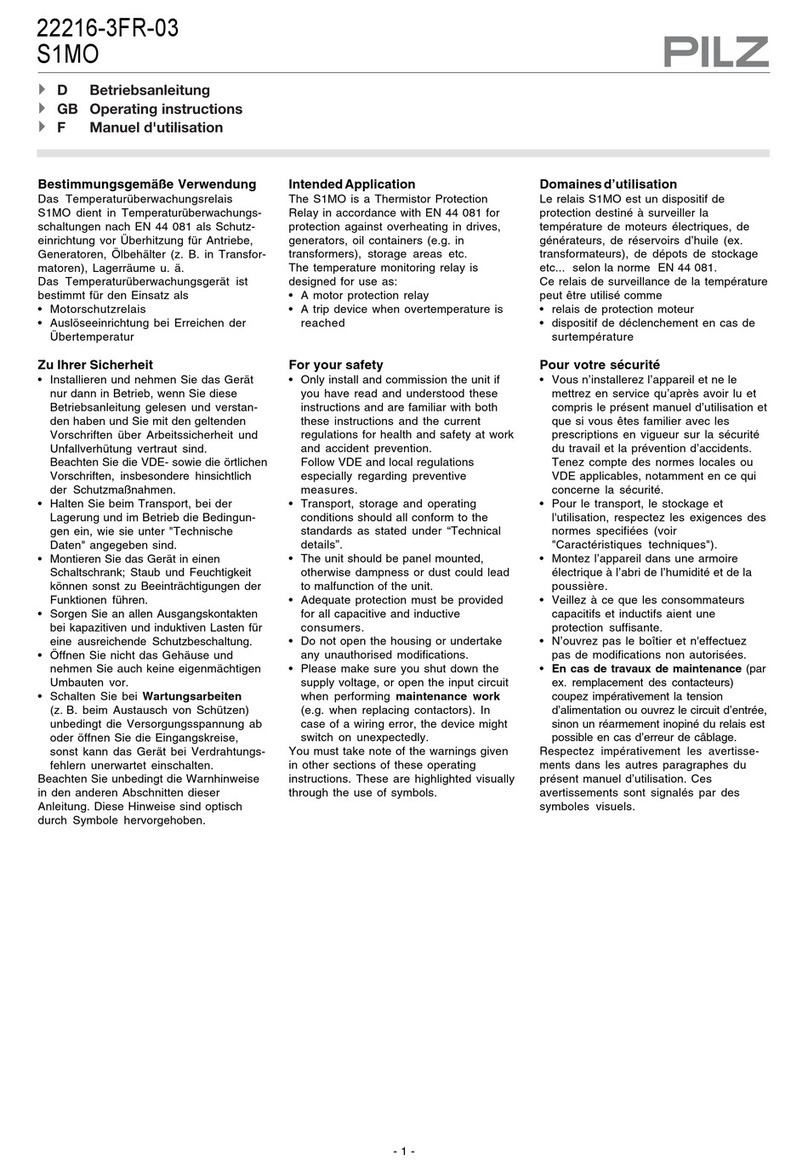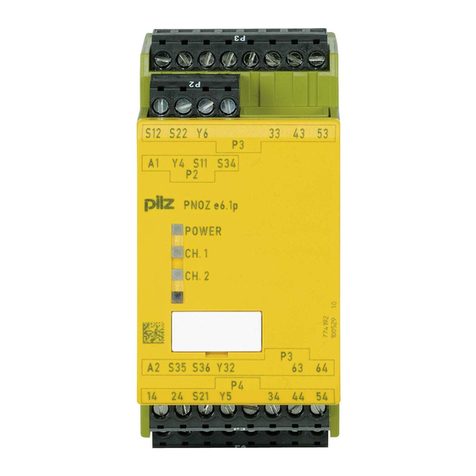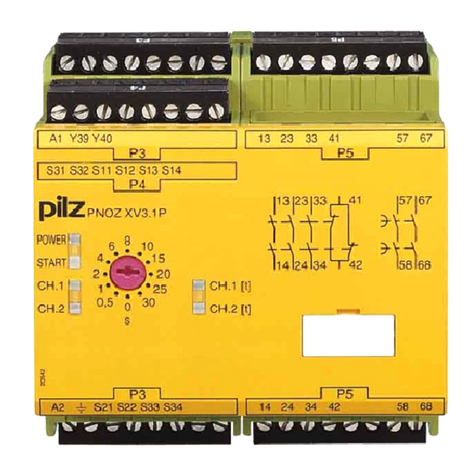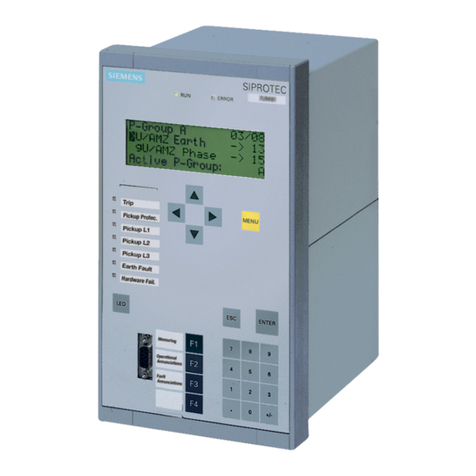
- 9 -
Prescripciones de seguridad
• El dispositivo debe ser instalado y puesto en
funcionamiento exclusivamente por personas
que estén familiarizadas tanto con estas ins-
trucciones de uso como con las prescripcio-
nes vigentes relativas a la seguridad en el
trabajo y a la prevención de accidentes.
Ob-
servar tanto las prescripciones VDE como
las prescripciones locales, especialmente
respecto a las medidas de protección.
• Durante el transporte, el almacenaje y el
funcionamiento hay que atenerse a las con-
diciones conforme a EN 60068-2-6 (ver da-
tos técnicos). Una vez finalizado su tiempo
de vida útil, hay que eliminar el dispositivo
de forma apropiada.
• La garantía se pierde en caso de que se
abra la carcasa o se lleven a cabo
remodelaciones por cuenta propia.
• Montar el dispositivo dentro de un armario
de distribución; en caso contrario es posible
que el polvo y la suciedad puedan afectar el
funcionamiento.
• Cuidar de que haya un conexionado de se-
guridad suficiente en todos los contactos de
salida con cargas capacitivas e inductivas.
• El dispositivo de a dos manos y las partes
del control de la prensa conectadas delante
y detrás tienen que corresponderse con las
prescripciones VDE pertinentes y con las
reglas de seguridad EN 574; EN 692 y EN
693.
• La tensión de servicio alimentación del relé
de manejo a dos manos sólo debe conectar-
se después del dispositivo de desconexión
en conformidad con art. 9 VBG 7n5.1/2.
• No tender el cable de conexión entre
P2HZ X1 y los pulsadores inmediatamente
junto a líneas de corriente de alta tensión;
en tal caso podrían producirse
acoplamientos parasitarios inductivos y
capacitivos.
• Debido a reducidas corrientes hay que utili-
zar contactos de pulsador con oro laminado.
• Sólo se permite conectar el dispositivo ex-
clusivamente como en los ejemplos de co-
nexión del capítulo “Aplicaciones”.
Campo de aplicación adecuado
P2HZ X1 satisface los requerimientos del tipo
III C según EN 574. El relé de manejo a dos
manos obliga al operario de una prensa a
mantener las manos fuera de la zona de peligro
mientras que tienen lugar los movimientos peli-
grosos de cierre, con objeto de evitar lesiones
en las manos.
P2HZ X1 es adecuado para su montaje en con-
troles para prensas para el trabajo de metales
como módulo de simultaneidad.
El dispositivo puede ser utilizado como disposi-
tivo de protección de las manos en conformidad
con las reglas técnicas
• Prensas excéntricas y similares
(EN 692)
• Prensas hidráulicas (EN 693)
• Prensas de husillo (EN 692)
o bien en
• Circuitos de seguridad según EN 60204-1;
VDE 0113-1.
Norme di sicurezza
• Il dispositivo può venire installato e messo
in funzione solo da persone che conoscono
bene le presenti istruzioni per l’uso e le
disposizioni vigenti relative alla sicurezza di
lavoro e all’antinfortunistica.
Osservare le
disposizioni della VDE (Associazione tede-
sca degli Ingegneri) nonché le norme locali,
soprattutto per quanto riguarda le misure
preventive di protezione.
• Durante il trasporto, l’immagazzinamento e il
funzionamento attenersi alle condizioni pre-
scritte dalla norma EN 60068-2-6 (v. Dati
tecnici). Al termine della propria durata,
smaltire il dispositivo in conformità alle nor-
me vigenti.
• Se viene aperto l’alloggiamento oppure se
vengono apportate delle modifiche in proprio
decade qualsiasi diritto di garanzia.
• Montare il dispositivo in un armadio elettrico;
altrimenti la polvere e l’umidità possono pre-
giudicare le funzioni.
• Occorre dotare tutti i contatti di uscita dei
carichi capacitivi e induttivi con un cablaggio
protettivo sufficiente.
• Il comando bimanuale e le parti del
comando della pressa collegate devono
rispettare le disposizioni e le norme di
sicurezza EN 574; EN 692 e EN 693.
• La tensione di alimentazione del relè a co-
mando bimanuale può solo essere collegata
secondo le prescrizioni § 9 VBG 7n5.1/2.
• Non posare assolutamente il cavo di colle-
gamento tra il P2HZ X1 e gli elementi di
comando vicino a cavi di corrente forte, per
evitare interferenze induttive o capacitive.
• Per evitare basse correnti i contatti degli ele-
menti di comando devono essere dorati.
• Il dispositivo può essere collegato solo come
indicato negli esempi di connessione al capi-
tolo “Utilizzo”.
Uso previsto
Il P2HZ X1 rispetta i requisiti della norma
EN 574 Tipo III C. Il relè a comando bimanuale
obbliga l’operatore di una pressa a mantenere
le mani all’esterno della zona pericolosa duran-
te il movimento della macchina per evitare ferite
alle mani.
Il P2HZ X1 deve essere montato in sistemi di
controllo per presse destinate alla lavorazione
dei metalli per garantire la funzione di simul-
taneità.
L’unità può essere utilizzata come dispositivo
per la protezione delle mani secondo le prescri-
zioni delle norme tecniche
• Presse eccentriche e simili
(EN 692)
• presse idrauliche (EN 693)
• presse a vite (EN 692)
oppure in
• circuiti elettrici di sicurezza secondo la norma
EN 60204-1; VDE 0113-1.
Veiligheidsvoorschriften
• Het apparaat mag uitsluitend worden
geïnstalleerd en in bedrijf genomen door
personen die vertrouwd zijn met deze
gebruiksaanwijzing en met de gel-dende
voorschriften op het gebied van arbeids-
veiligheid en ongevallenpreventie.
Neem
de VDE-voorschriften alsmede de plaatse-
lijke voorschriften in acht, in het bijzonder
m.b.t. de veiligheidsregels.
• Neem bij transport, opslag en in bedrijf de
richtlijnen volgens EN 60068-2-6 in acht (zie
technische gegevens). Het apparaat na
afloop van zijn levensduur op de juiste wijze
verwijderen en opslaan.
• Het openen van de behuizing of het eigen-
machtig aanpassen heeft verlies van de
garantie tot gevolg.
• Monteer het apparaat in een schakelkast.
Stof en vocht kunnen anders de werking
nadelig beïnvloeden.
• Zorg bij alle uitgangscontacten bij capaci-
tieve en inductieve belastingen voor vol-
doende beschermbedrading.
• De tweehandenschakeling en de ervoor en
erachter aangebrachte onderdelen van de
persbestu-ring moeten beantwoorden aan
de desbetreffende VDE-voorschriften en
de veiligheidsregels EN 574;
EN 692 en EN 693.
• De voedingsspanning van het tweehanden-
bedieningsrelais mag uitsluitend na de uit
schakelinrichting overeenkomstig
§ 9 VBG 7n5-1/2 worden aangesloten.
• Monteer de verbindingskabels tussen
P2HZ X1 en de knoppen niet direct naast
sterkstroomkabels; hierdoor kunnen in-
ductieve en capacitieve stoorkoppelingen
ontstaan.
• Gebruik wegens de geringe stromen
vergulde tastercontacten.
• Het apparaat mag alleen worden aangeslo-
ten zoals in de aansluitvoorbeelden in het
hoofdstuk “Toepassingen” is beschreven.
Toegelaten applicaties
P2HZ X1 beantwoordt aan de eis volgens
EN 574, 11/96 type III C. Ter voorkoming van
verwondingen aan de handen dwingt het twee-
handenbedieningsrelais de gebruiker van een
pers om zijn handen tijdens de gevaarlijke sluit-
beweging buiten de gevarenzone te houden.
P2HZ X1 is als bouwsteen van de gelijktij-
digheid geschikt voor het inbouwen in besturin-
gen voor persen in de metaalbewerking.
Volgens de technische voorschriften kan het
apparaat als handbescherming bij
• “excenterpersen en gelijksoortige persen”
(EN 692)
• hydraulische persen (EN 693)
• spilpersen (EN 692)
of in
• veiligheidsstroomcircuits volgens
EN 60204-1, VDE 0113-1
worden gebruikt.
20 124-01
P2HZ X1
4E Instrucciones de uso
4I Istruzioni per l`uso
4NL Gebruiksaanwijzing
